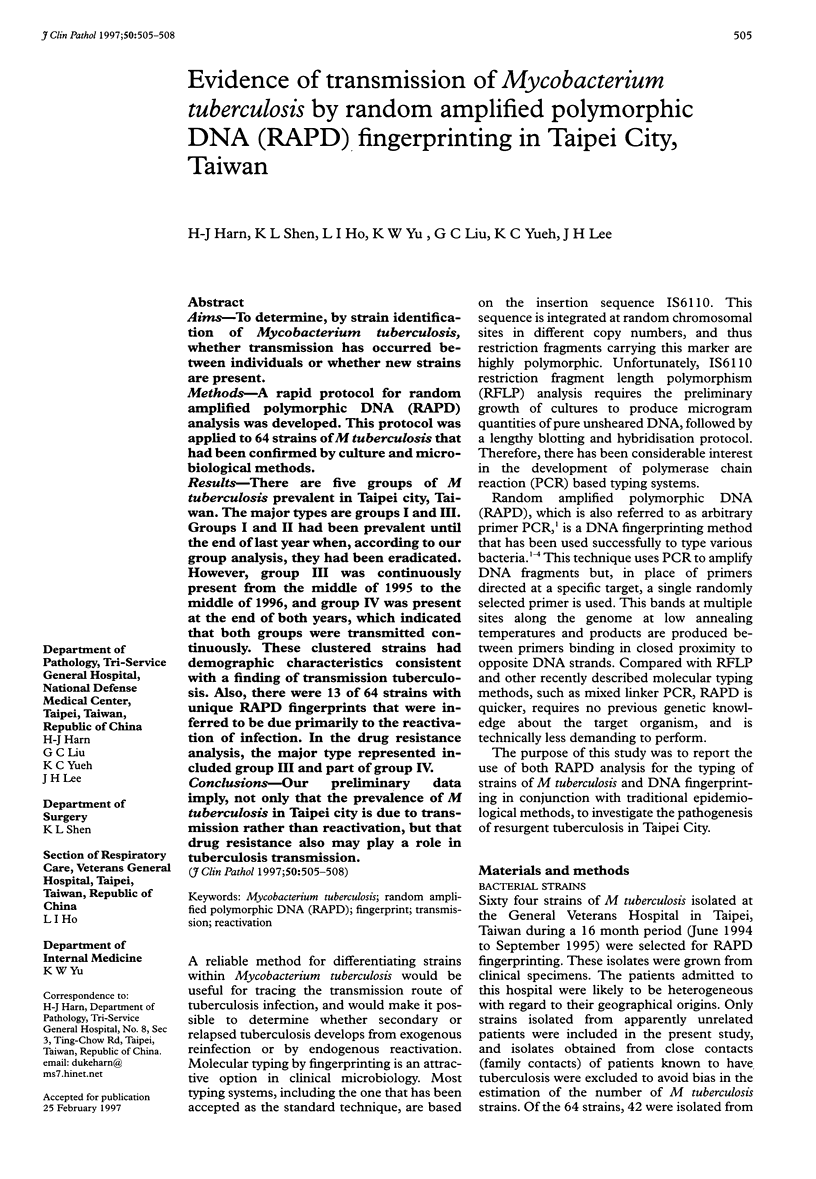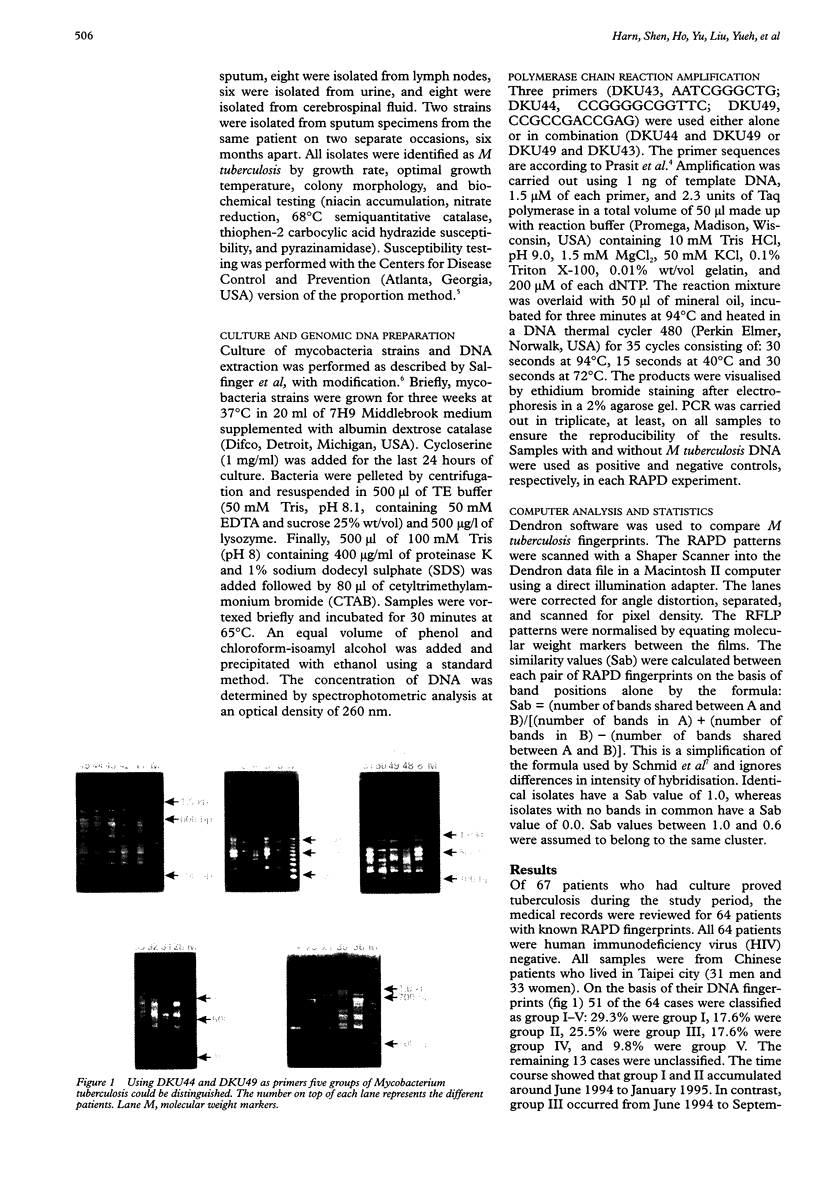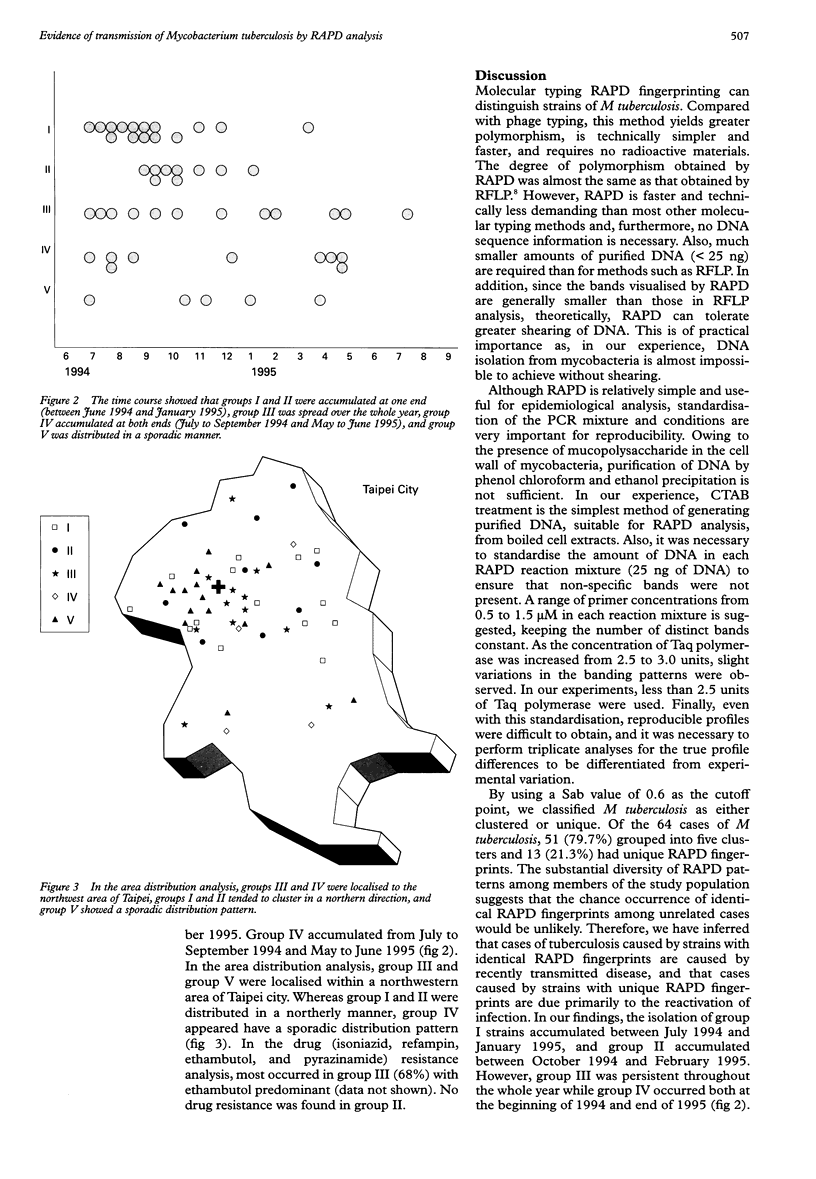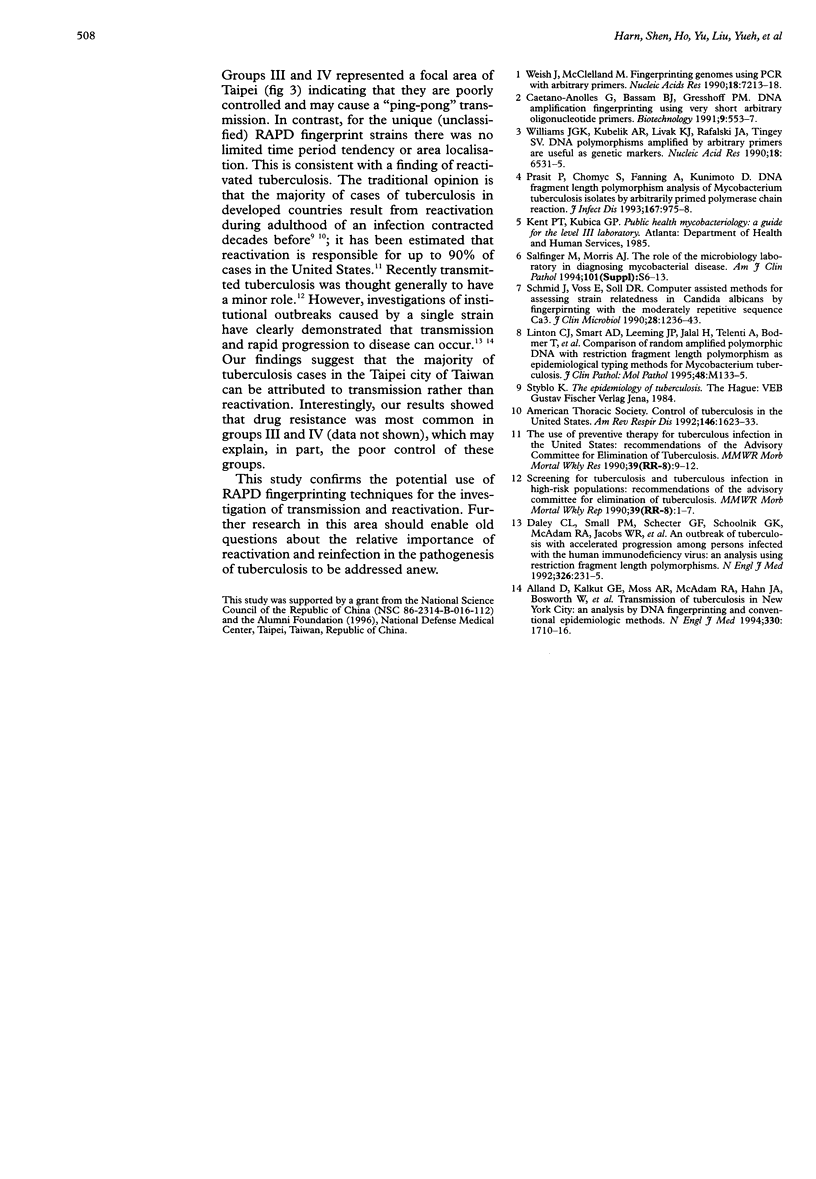Abstract
AIMS: To determine, by strain identification of Mycobacterium tuberculosis, whether transmission has occurred between individuals or whether new strains are present. METHODS: A rapid protocol for random amplified polymorphic DNA (RAPD) analysis was developed. This protocol was applied to 64 strains of M tuberculosis that had been confirmed by culture and microbiological methods. RESULTS: There are five groups of M tuberculosis prevalent in Taipei city, Taiwan. The major types are groups I and III. Groups I and II had been prevalent until the end of last year when, according to our group analysis, they had been eradicated. However, group III was continuously present from the middle of 1995 to the middle of 1996, and group IV was present at the end of both years, which indicated that both groups were transmitted continuously. These clustered strains had demographic characteristics consistent with a finding of transmission tuberculosis. Also, there were 13 of 64 strains with unique RAPD fingerprints that were inferred to be due primarily to the reactivation of infection. In the drug resistance analysis, the major type represented included group III and part of group IV. CONCLUSIONS: Our preliminary data imply, not only that the prevalence of M tuberculosis in Taipei city is due to transmission rather than reactivation, but that drug resistance also may play a role in tuberculosis transmission.
Full text
PDF



Images in this article
Selected References
These references are in PubMed. This may not be the complete list of references from this article.
- Alland D., Kalkut G. E., Moss A. R., McAdam R. A., Hahn J. A., Bosworth W., Drucker E., Bloom B. R. Transmission of tuberculosis in New York City. An analysis by DNA fingerprinting and conventional epidemiologic methods. N Engl J Med. 1994 Jun 16;330(24):1710–1716. doi: 10.1056/NEJM199406163302403. [DOI] [PubMed] [Google Scholar]
- Caetano-Anollés G., Bassam B. J., Gresshoff P. M. DNA amplification fingerprinting using very short arbitrary oligonucleotide primers. Biotechnology (N Y) 1991 Jun;9(6):553–557. doi: 10.1038/nbt0691-553. [DOI] [PubMed] [Google Scholar]
- Daley C. L., Small P. M., Schecter G. F., Schoolnik G. K., McAdam R. A., Jacobs W. R., Jr, Hopewell P. C. An outbreak of tuberculosis with accelerated progression among persons infected with the human immunodeficiency virus. An analysis using restriction-fragment-length polymorphisms. N Engl J Med. 1992 Jan 23;326(4):231–235. doi: 10.1056/NEJM199201233260404. [DOI] [PubMed] [Google Scholar]
- Palittapongarnpim P., Chomyc S., Fanning A., Kunimoto D. DNA fragment length polymorphism analysis of Mycobacterium tuberculosis isolates by arbitrarily primed polymerase chain reaction. J Infect Dis. 1993 Apr;167(4):975–978. doi: 10.1093/infdis/167.4.975. [DOI] [PubMed] [Google Scholar]
- Salfinger M., Morris A. J. The role of the microbiology laboratory in diagnosing mycobacterial diseases. Am J Clin Pathol. 1994 Apr;101(4 Suppl 1):S6–13. [PubMed] [Google Scholar]
- Schmid J., Voss E., Soll D. R. Computer-assisted methods for assessing strain relatedness in Candida albicans by fingerprinting with the moderately repetitive sequence Ca3. J Clin Microbiol. 1990 Jun;28(6):1236–1243. doi: 10.1128/jcm.28.6.1236-1243.1990. [DOI] [PMC free article] [PubMed] [Google Scholar]
- Welsh J., McClelland M. Fingerprinting genomes using PCR with arbitrary primers. Nucleic Acids Res. 1990 Dec 25;18(24):7213–7218. doi: 10.1093/nar/18.24.7213. [DOI] [PMC free article] [PubMed] [Google Scholar]
- Williams J. G., Kubelik A. R., Livak K. J., Rafalski J. A., Tingey S. V. DNA polymorphisms amplified by arbitrary primers are useful as genetic markers. Nucleic Acids Res. 1990 Nov 25;18(22):6531–6535. doi: 10.1093/nar/18.22.6531. [DOI] [PMC free article] [PubMed] [Google Scholar]



